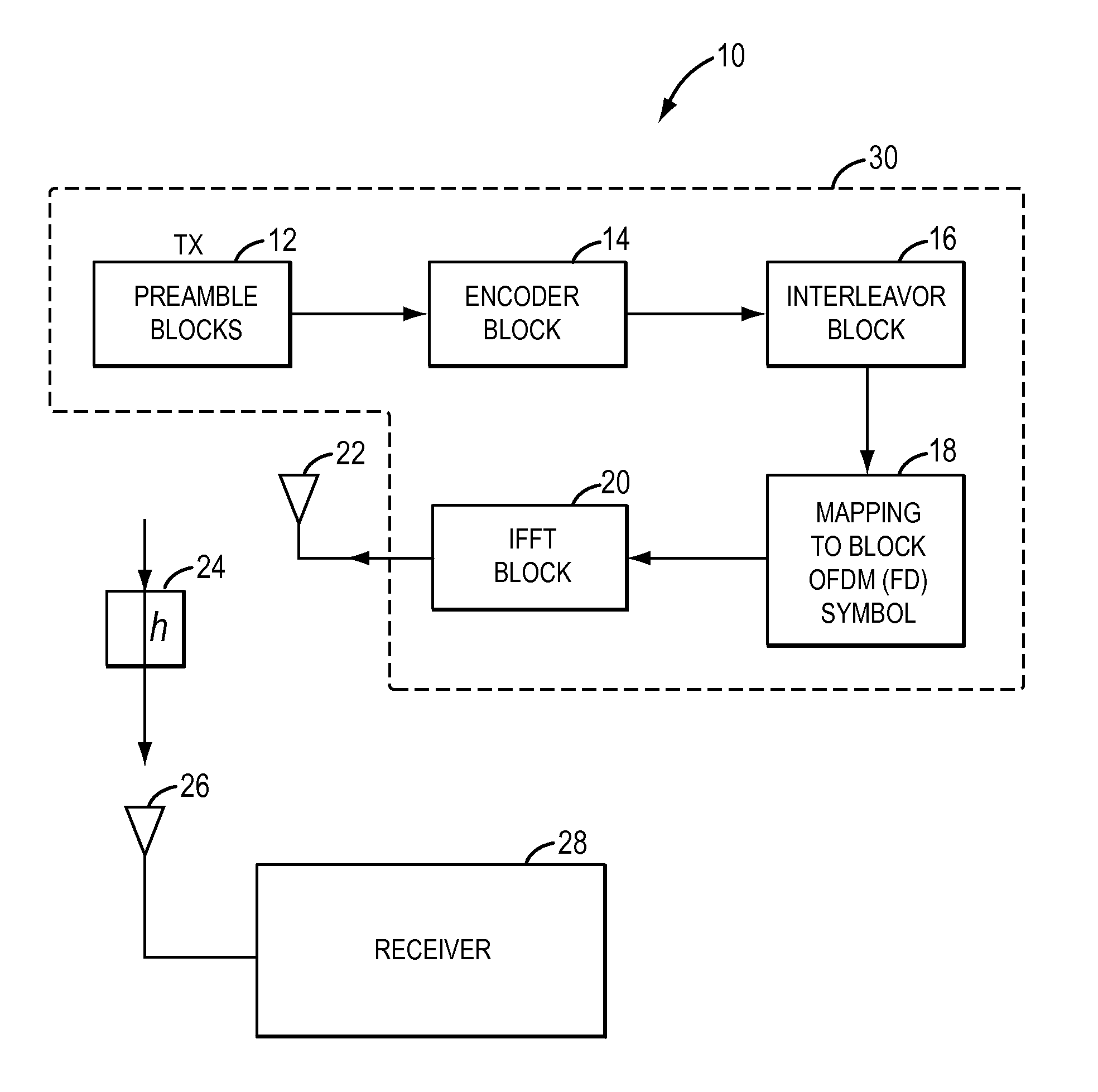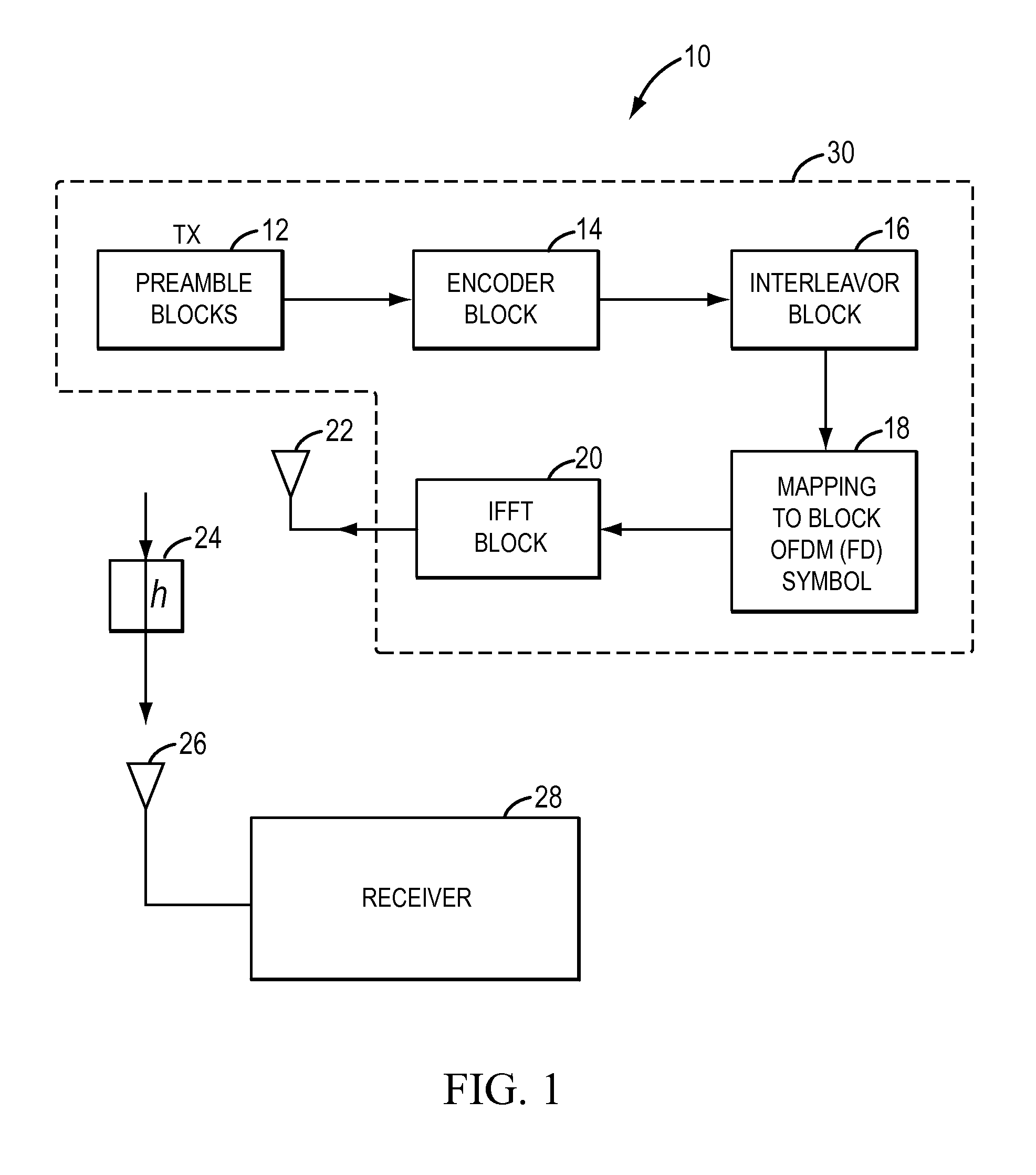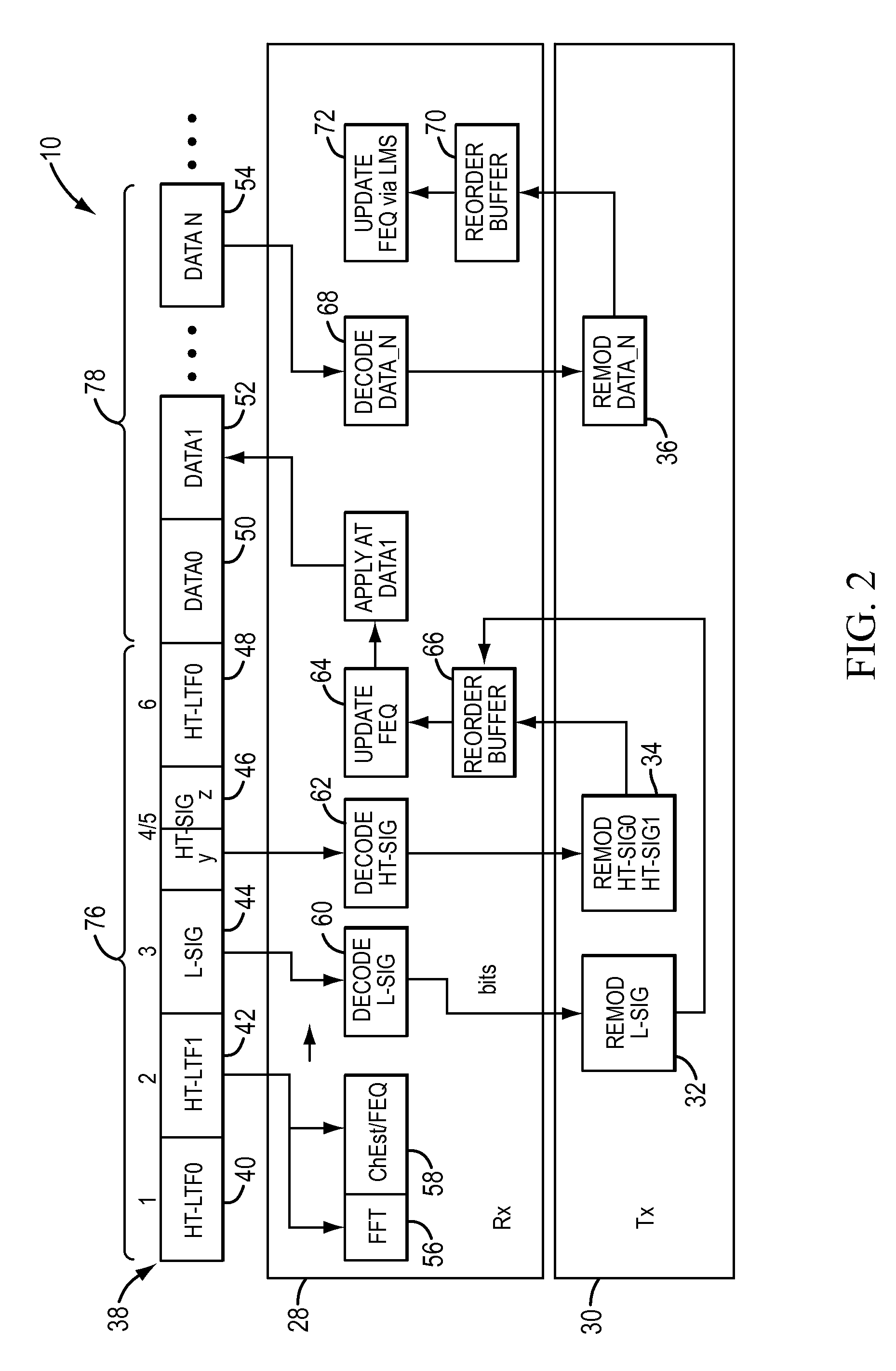Method and apparatus for reception in a multi-input-multi-output (MIMO) orthogonal frequency domain modulation (OFDM) wireless communication system
a wireless communication system and orthogonal frequency domain technology, applied in the field of wireless communication systems, can solve problems such as instability in the analog radio frequency (rf) circuitry, poor performance, and inaccurate channel estimation
- Summary
- Abstract
- Description
- Claims
- Application Information
AI Technical Summary
Benefits of technology
Problems solved by technology
Method used
Image
Examples
Embodiment Construction
[0022]Referring now to FIG. 1, a multi input multi output (MIMO) transceiver 10 is shown to include a MIMO transmitter 30, an antenna 22, an antenna 26, and a receiver 28, in accordance with an embodiment of the present invention. The transmitter sends preamble and data information, through the antenna 22, to the receiver 28, which receives this information through the antenna 26. A channel model 24, indicated by “h”, represents the wireless channel between the transmitter 10 and its antenna 22, and the receiver 28 and its respective antenna 26. Further details of receiver 28 are presented and discussed relative to subsequent figures.
[0023]Transceiver 10 is shown to include a preamble block 12, an encoder block 14, a block interleaver block 16, a mapping block 18 and an inverse fast Fourier transform (IFFT) block 20. Preamble block 12 generates preamble bits that are used for equalizer training and synchronization and other types of function related to the data that is to be transmi...
PUM
 Login to View More
Login to View More Abstract
Description
Claims
Application Information
 Login to View More
Login to View More - R&D
- Intellectual Property
- Life Sciences
- Materials
- Tech Scout
- Unparalleled Data Quality
- Higher Quality Content
- 60% Fewer Hallucinations
Browse by: Latest US Patents, China's latest patents, Technical Efficacy Thesaurus, Application Domain, Technology Topic, Popular Technical Reports.
© 2025 PatSnap. All rights reserved.Legal|Privacy policy|Modern Slavery Act Transparency Statement|Sitemap|About US| Contact US: help@patsnap.com



